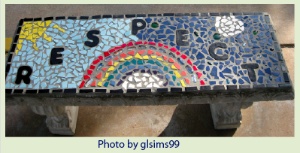Promote Restorative Practices
When someone does something that hurts another person, teachers and administrators feel compelled to respond and help out, quite often by resorting to various forms of punishment directed at the wrong-doer. However, in recent years, an alternative approach for responding to harm has been gaining ground. It focuses more on addressing the needs of victims, involving a broader community of supporters, and finding ways for the offender to work their way back into the good graces of the community. In states like Colorado, Minnesota and Michigan, educators are implementing a variety of restorative discipline alternatives to traditional measures such as detention, suspension, expulsion, and police charges.
Activity Idea: Print up an affective questions list, decorate it appropriately and post it in prominent places to remind conflict intervenors to think restoratively. Alternatively, how about creating some bookmarks? Here’s a good list of questions that promote self and other awareness when a wrongdoing has occurred.
Affective questions:
What happened?
How did it happen?
How did you act in this situation?
Who do you think was affected?
How were they affected?
How were you affected?
What needs to happen to make things right?
If the same situation happens again how could you behave differently?

CRE Calendar Usage: 1st Edition
